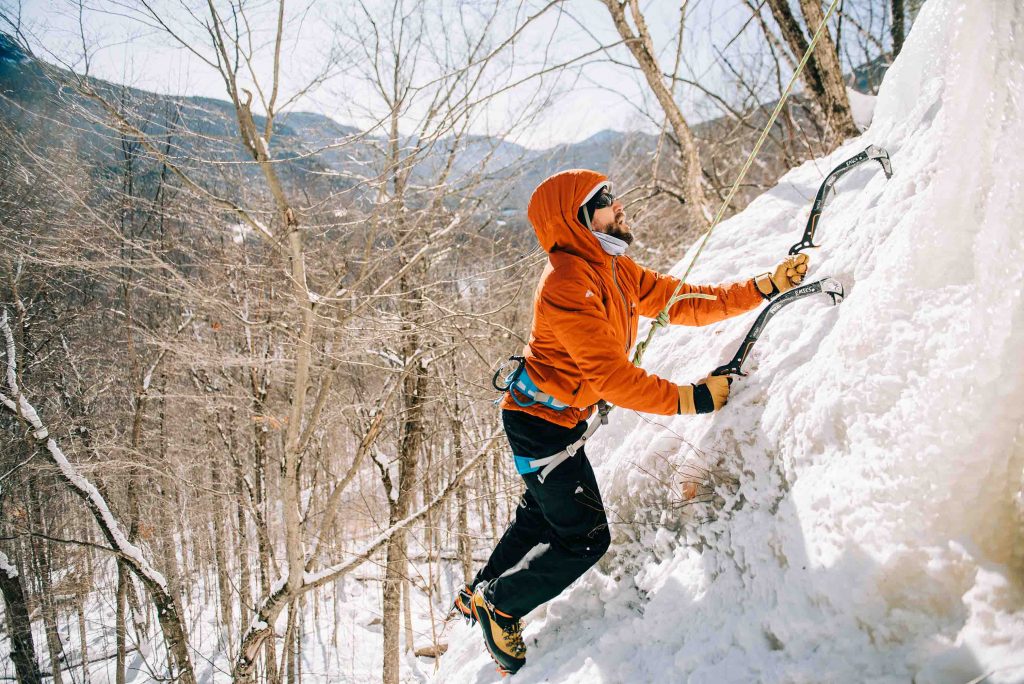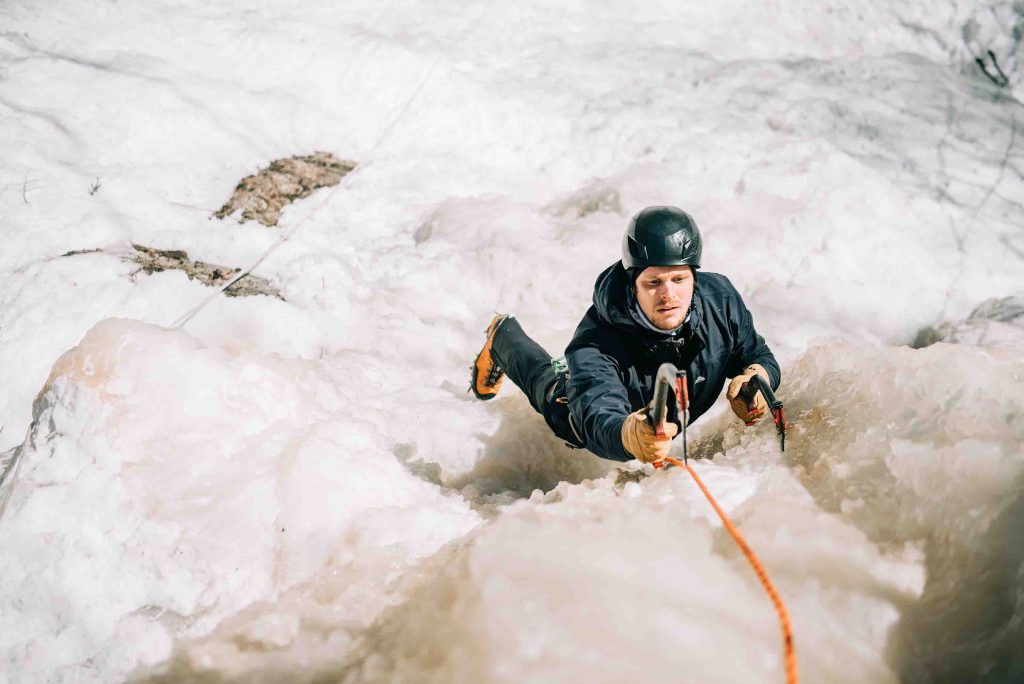Images of ice climbing have started to populate the feeds of New England climbers as early-season classics like the Black Dike are seeing ascents and exploration is happening on the flows in Tuckerman Ravine. Swinging your tools in November and early December is fun, but there are some important things to remember before venturing out. Here are a few of the dos and don’ts of early-season ice climbing.
The Dos and Don’ts of Early-Season Ice Climbing
Do Take Your Tools for a Walk
Having a rigid plan is a recipe for disaster, especially early in the ice season. Planning to climb Pinnacle Gully before Thanksgiving? Great. However, stay flexible, plan for a variety of possible objectives in a zone, and be willing to abort from an route if it’s not in condition. Sometimes a day of ice climbing early in the season ends up as nothing more than a long hike
If you end up just “taking your tools for a walk,” consider it good aerobic training and enjoy the time outside with your ice climbing friends.
Don’t Put New Picks/Points on Your Tools/Crampons
Save yourself the effort—and your new picks/points some life—by waiting to put them on your tools/crampons, as you’re just as likely to hit rocks as you are thick flows on early-season ice climbs. Similarly, don’t waste your time filing your tools and crampons to a razor’s edge only to dull them on your first swing/kick.
Ultimately, save the sharp stuff for mid-season when the ice is fat.
Do Bring Rock Gear
The idea that you can sew up an early-season ice climb with just screws is more fiction than reality. An early-season ice rack commonly includes screws, cams, and stoppers, along with some pitons/spectres.
Not sure how to place rock gear? Never heard of a spectre? Take advantage of the early season to build some skills and take a class with the Eastern Mountain Sports Climbing School.
Don’t Get In Over Your Head
Make sure that your first ice leads of the season are within your ability. It’s common for climbs to not have fully formed before Christmas, which often means ice (and protection) that’s less than confidence-inspiring. If you’re getting on an ice climb early in the season, make sure it’s a route you’re 100% confident you can climb in any condition.
If you’re not sure you’re ready for a route, save it for a time when you are.
Do Bring MICROspikes
MICROspikes are becoming de rigueur for ice climbers in the Northeast and are the go-to piece of gear for crossing talus fields like those at the base of Cannon Cliff, Tuckerman Ravine, and King Ravine. Similarly, a trekking pole is a useful addition to your kit for negotiating tricky, unstable talus. Many of today’s trekking poles collapse small enough to slide inside your climbing pack once you break out your tools.
Don’t Get Sucked In By Social Media
Just because one team climbed a route, doesn’t mean it’s go time. The Northeast is filled with certified crushers and their idea of a casual day in the mountains might be a full-on epic for you. Ice also changes fast early in the season and a fat route that was good to go on Tuesday morning can transform into a battle royale just a day later.
Do Get Organized
You don’t want to get all the way into Tuckerman Ravine to discover that your old crampons don’t fit your new boots, you forgot to pack a second set of gloves, or something as simple as your laces look like they could snap at any moment. Spend some time gathering your kit and making sure everything is in order before your first ice-climbing mission.
Don’t Underestimate the Approach
Most early-season ice climbs require a considerable approach—plan on it taking longer than expected. EMS guides have done everything from wading through chest-deep snow as early as October in Huntington Ravine and crawling across rocks covered in verglas the day after Thanksgiving in Tuckermans.
In the end, you never know what conditions you’ll find early in the season. Factor this into your route planning.
Early-Season Ice Climbing
Nabbing an early-season ascent of an ice route is a great way to kick off the season, and a little preparation and some patience will ensure your season gets off to a good start. After all, it’s a long season.
EMS Climbing School
The Eastern Mountain Sports Climbing School is the oldest climbing school in the East. It has offered technical rock climbing instruction since 1968 and is one of less than 40 guide services in the US accredited by the American Mountain Guides Association (AMGA).
The EMS Climbing School helps people achieve their adventurous goals, whether it's climbing an iconic route, skiing a dream line, building technical skills, or sharing valuable beta.
Related Posts
April 12, 2024
Explore Like a Local: The Outdoor Mecca of North Conway, NH
There's a lot to love about this New…
April 3, 2024
5 Things To Do in the Boston Area During Mud Season
Adventure opportunities are abundant…







